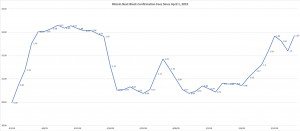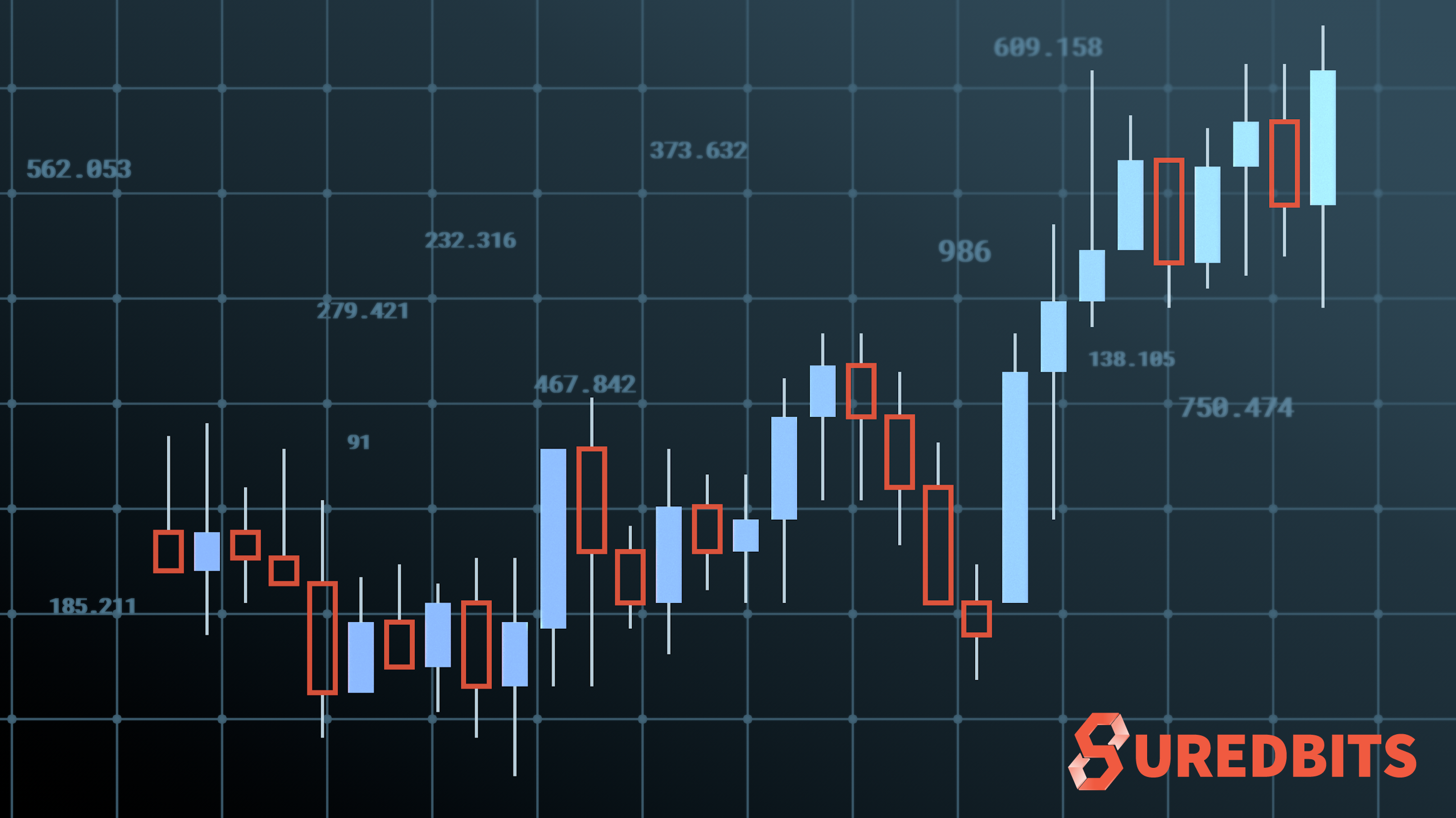We’ve written a number of posts explaining and discussing how Lightning can help individual traders as well as exchanges have a better trading experience and make more money. The current bitcoin bull market serves as a convenient opportunity to highlight how much exchanges and traders can save by adopting Lightning into their platforms.
Lightning 101: Lightning Network Fees
Lightning 101 for Exchanges: Managing Fees With Lightning
A Snapshot
As of this writing, the running average for next block confirmation fees are averaging around $2.78. However, let’s focus on just the period of time since April 1st which is a good starting point for looking at the recent spike in bitcoin price. The average next block fee since April 1st is a modest $.47. That is relatively cheap. But if we look at the movement of fees since then we see a more complete picture:

Average Bitcoin Fees
We can see more clearly how volatile fees can be. At their peak, they were as high as $2.15 on April 8th, only to drop again to $.69 on April 21st. And yet again, we see fees creeping as we entered the May run up.
Thus, depending on timing, you might pay as little as $.69 cents or as much as $2.15 (or more) to have your transaction confirmed on the next block.
What is certain is the relationship between bitcoin on-chain activity and increasing fees. We know fees will only increase as more transactions occur on the bitcoin blockchain.
Fees on Lightning
Now let’s compare the bitcoin fee to the Lightning Network fee. If we assume $100 is the amount of USD being exchanged, then the total fee paid for this transaction on Lightning is 2.27 satoshis or $.00018 USD. That is a 99.98% savings compared to bitcoin on-chain fees. Compound that by every time someone wishes to deposit or withdraw funds.
Consider the 2017 bull market where fees were as high as $37.50 or more, these savings – both in terms of money and time – only grow larger.
[Calculation: $100 USD is roughly 0.0127 btc, or 1,271,935 satoshis. The median fee rate as of this writing is .000001. Take the total amount of satoshis – 1,271,935 – and multiply that by the fee rate of .000001 which equals 1.271935. Add a median base fee of 1 satoshi and the total Lightning fee is 2.271935 satoshis.]
The important takeaway is Lightning fees are consistently and reliably cheaper. So even if the Lightning fee is set at a baseline of $1.00 by a node operator, it doesn’t fluctuate with on-chain congestion. Thus it is stable and reliable. And exponentially faster than on-chain transactions.
(Recall that how Lightning fees are set is structurally different than bitcoin since they have a base fee and a fee rate. And Lightning node operators can set their fees to whatever they wish. )
Summary
We’ve discussed at length the advantages of using Lightning for withdrawals and deposits over on-chain transactions. Lightning is faster and reliably cheaper. The recent bitcoin bull market provides a useful snapshot that highlights exactly how much cheaper. Even at bitcoin’s lowest fee of 69 cents, Lightning is 99% less expensive and faster. Incredible value is created for both exchanges and their customers by adopting Lightning on their platform.
If you’re interested in chatting more about Lightning Network technology or crypto tech in general, you can find us on Twitter @Suredbits or join our Suredbits Slack community.
If you are an exchange or interested in what Lightning can do for you and your business, contact us at [email protected].
You can also reach us on the Lightning Network:
038bdb5538a4e415c42f8fb09750729752c1a1800d321f4bb056a9f582569fbf8e@ln.suredbits.com.

